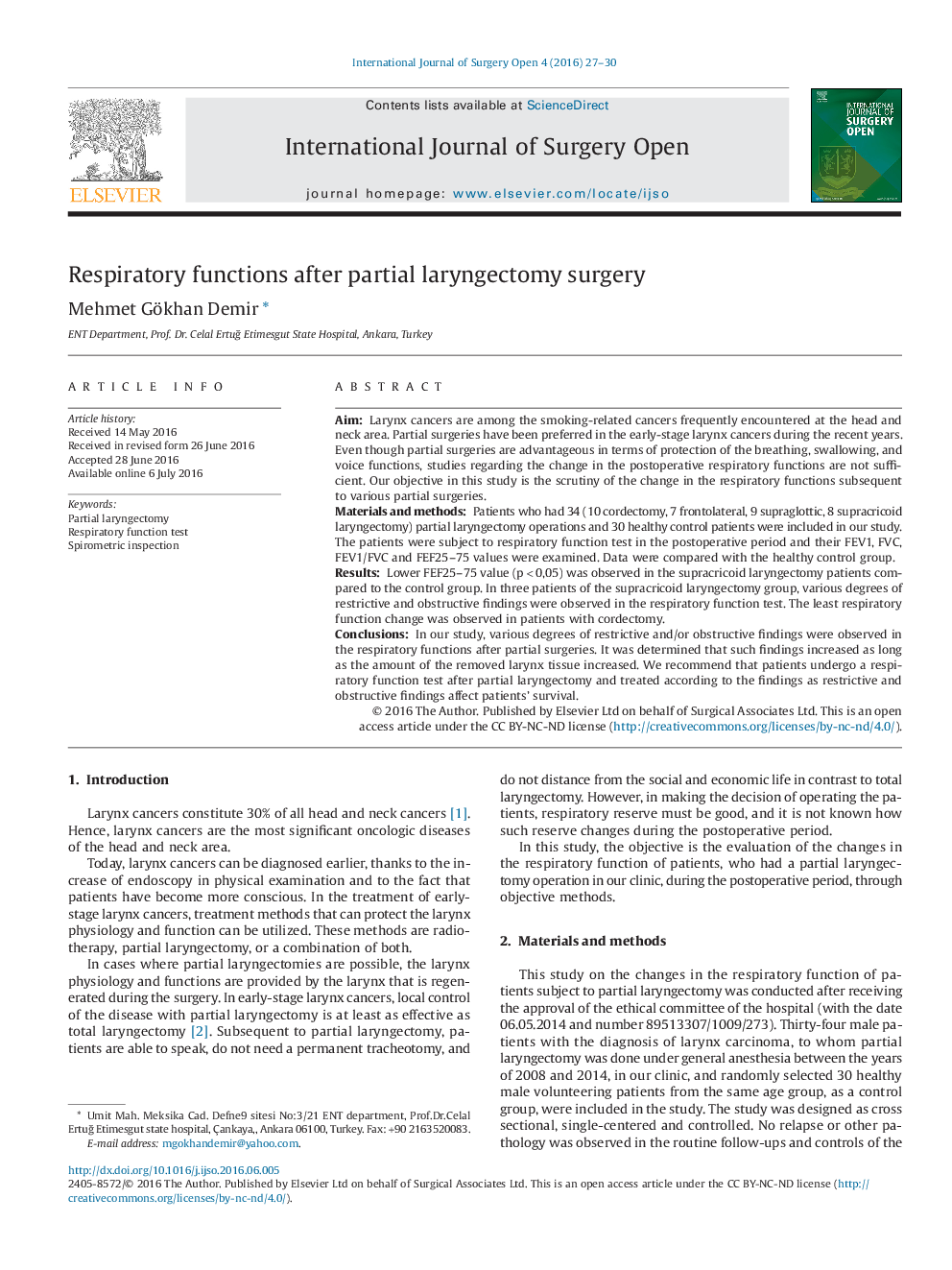| Article ID | Journal | Published Year | Pages | File Type |
|---|---|---|---|---|
| 2728495 | International Journal of Surgery Open | 2016 | 4 Pages |
•Lower FEF25–75 value was observed in supracricoid laryngectomy patients compared to control.•Various degrees of restrictive and obstructive findings in the RFT were observed in supracricoid laryngectomy group.•The least respiratory function change was observed in patients with cordectomy.•Among the partial laryngectomy group, no significant difference in terms of RFT parameters was observed.•All the groups have lower MPT than the control group in significant levels.
AimLarynx cancers are among the smoking-related cancers frequently encountered at the head and neck area. Partial surgeries have been preferred in the early-stage larynx cancers during the recent years. Even though partial surgeries are advantageous in terms of protection of the breathing, swallowing, and voice functions, studies regarding the change in the postoperative respiratory functions are not sufficient. Our objective in this study is the scrutiny of the change in the respiratory functions subsequent to various partial surgeries.Materials and methodsPatients who had 34 (10 cordectomy, 7 frontolateral, 9 supraglottic, 8 supracricoid laryngectomy) partial laryngectomy operations and 30 healthy control patients were included in our study. The patients were subject to respiratory function test in the postoperative period and their FEV1, FVC, FEV1/FVC and FEF25–75 values were examined. Data were compared with the healthy control group.ResultsLower FEF25–75 value (p < 0,05) was observed in the supracricoid laryngectomy patients compared to the control group. In three patients of the supracricoid laryngectomy group, various degrees of restrictive and obstructive findings were observed in the respiratory function test. The least respiratory function change was observed in patients with cordectomy.ConclusionsIn our study, various degrees of restrictive and/or obstructive findings were observed in the respiratory functions after partial surgeries. It was determined that such findings increased as long as the amount of the removed larynx tissue increased. We recommend that patients undergo a respiratory function test after partial laryngectomy and treated according to the findings as restrictive and obstructive findings affect patients' survival.
